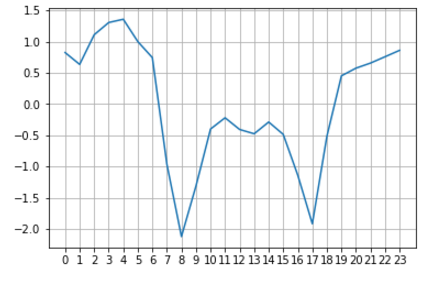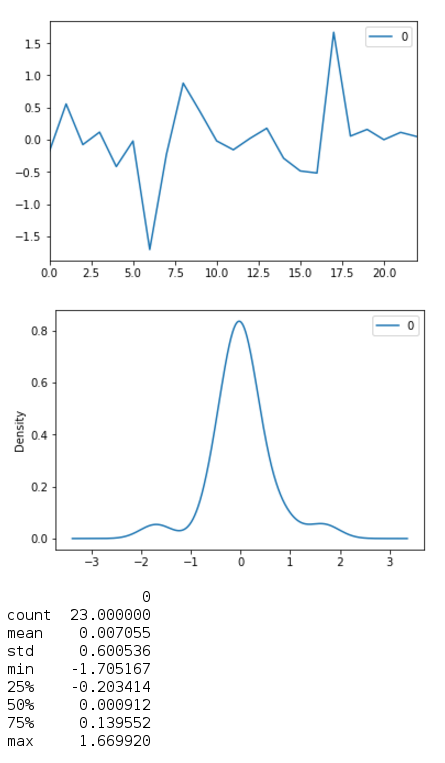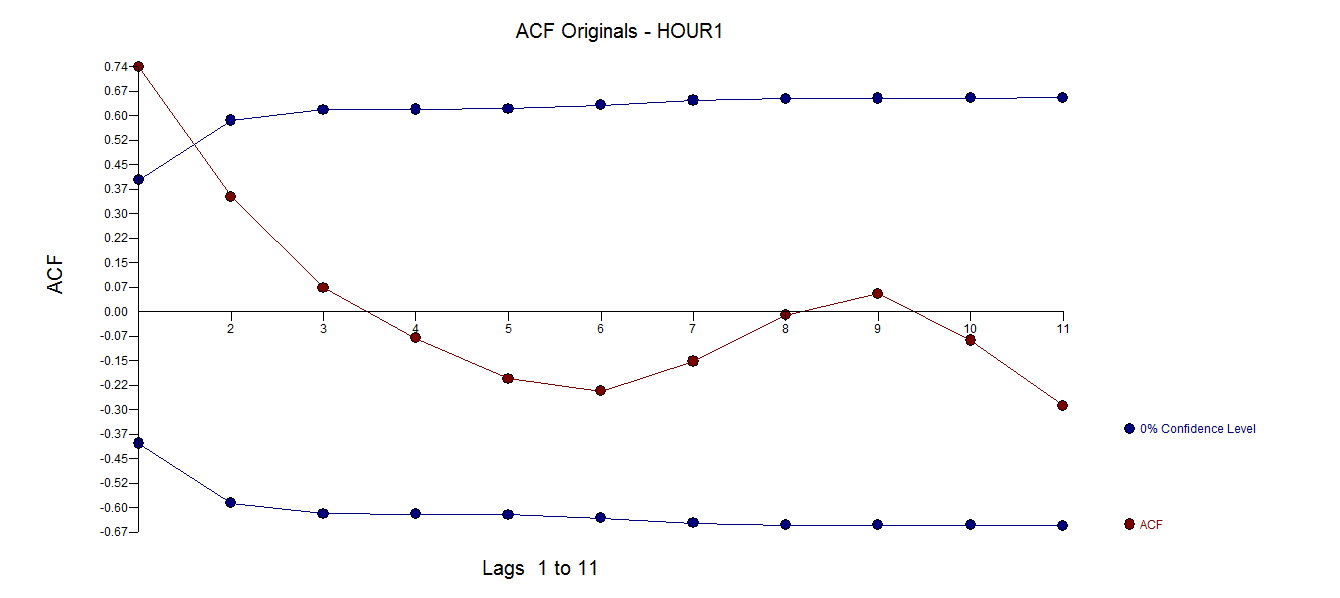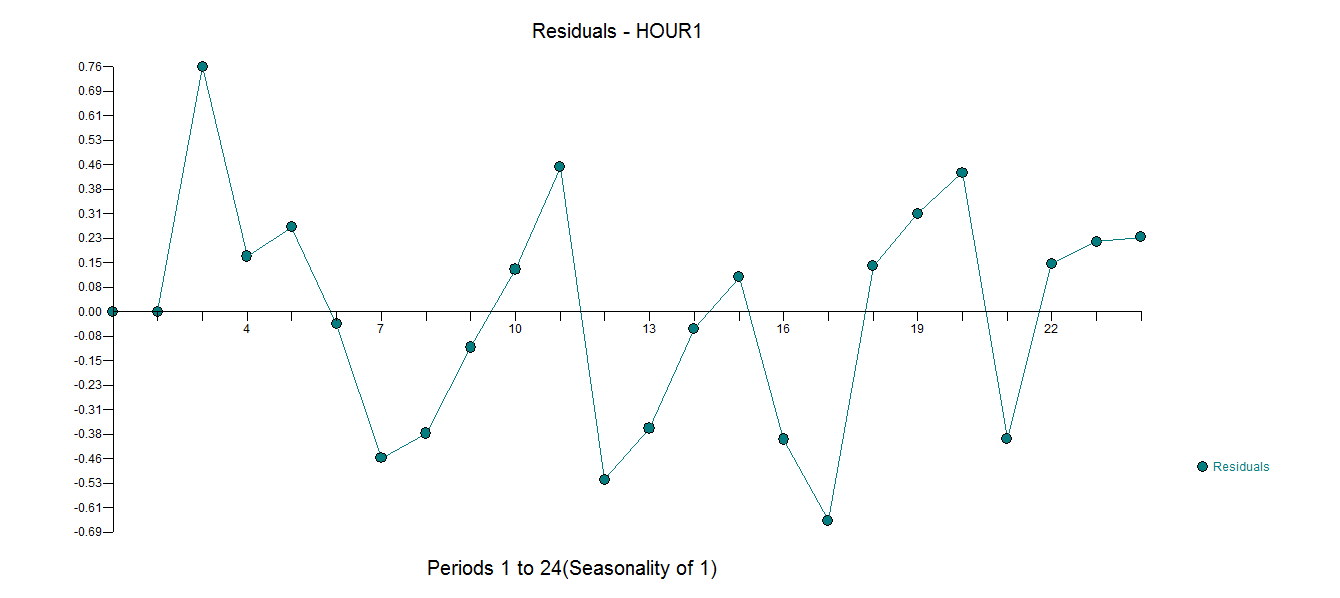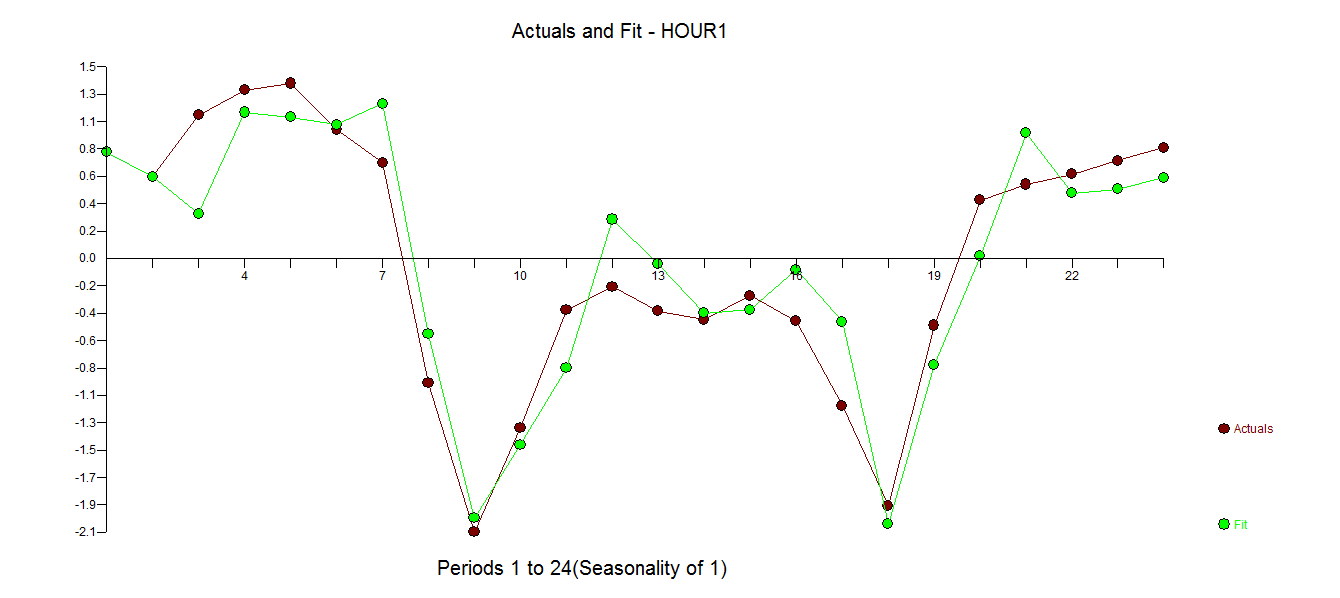I applied applied ARIMA to my time series data (24 hours of a day) which is this:
Sdate Speed
2012-12-11 00:00:00 0.823237
2012-12-11 01:00:00 0.633637
2012-12-11 02:00:00 1.10858
2012-12-11 03:00:00 1.30435
2012-12-11 04:00:00 1.35649
2012-12-11 05:00:00 0.998616
2012-12-11 06:00:00 0.742183
2012-12-11 07:00:00 -0.966582
2012-12-11 08:00:00 -2.12219
2012-12-11 09:00:00 -1.31213
2012-12-11 10:00:00 -0.401101
2012-12-11 11:00:00 -0.220982
2012-12-11 12:00:00 -0.408211
2012-12-11 13:00:00 -0.476941
2012-12-11 14:00:00 -0.288764
2012-12-11 15:00:00 -0.487369
2012-12-11 16:00:00 -1.14101
2012-12-11 17:00:00 -1.91742
2012-12-11 18:00:00 -0.518653
2012-12-11 19:00:00 0.450674
2012-12-11 20:00:00 0.573439
2012-12-11 21:00:00 0.654967
2012-12-11 22:00:00 0.756403
2012-12-11 23:00:00 0.858787
So,
Plotting the data:
ACF graph and PACF graph:
I took an AR(1) and MA(1) with differencing of 1.
Applying the ARIMA model, I get:
ARIMA(1,1,1):
The results for ARIMA model I get:
ARIMA Model Results
==============================================================================
Dep. Variable: D.y No. Observations: 23
Model: ARIMA(1, 1, 1) Log Likelihood -20.539
Method: css-mle S.D. of innovations 0.586
Date: Mon, 06 Nov 2017 AIC 49.079
Time: 11:43:53 BIC 53.621
Sample: 1 HQIC 50.221
==============================================================================
coef std err z P>|z| [0.025 0.975]
------------------------------------------------------------------------------
const -0.0082 0.182 -0.045 0.964 -0.365 0.348
ar.L1.D.y -0.0659 0.311 -0.212 0.835 -0.676 0.544
ma.L1.D.y 0.6066 0.236 2.575 0.018 0.145 1.068
Roots
=============================================================================
Real Imaginary Modulus Frequency
-----------------------------------------------------------------------------
AR.1 -15.1848 +0.0000j 15.1848 0.5000
MA.1 -1.6484 +0.0000j 1.6484 0.5000
-----------------------------------------------------------------------------
I then predict and I covert it back to the original scale. I do, hat(Y)t+1 = Yt + hat(z)t+1, where hat(z)t+1 is the difference value of t+1.
The following code does that:
forecast = model_fit.predict()
prediction = pd.Series(forecast, copy=True)
prediction.ix[0] = prediction.ix[0] + (prediction.ix[0] - mon_two_speed.ix[0].values)
print(prediction.ix[0])
for i in range(len(prediction) - 1):
prediction.ix[i+1] = prediction.ix[i+1] + (prediction.ix[i + 1] - prediction.ix[i])
Plotting the prediction gives me bizarre values:
The graph:
I am fairly new to this, so I don't have much idea as of what to expect and infer from the results I get. I am not sure what I am doing wrong and any suggestions will be appreciated. Thanks.

